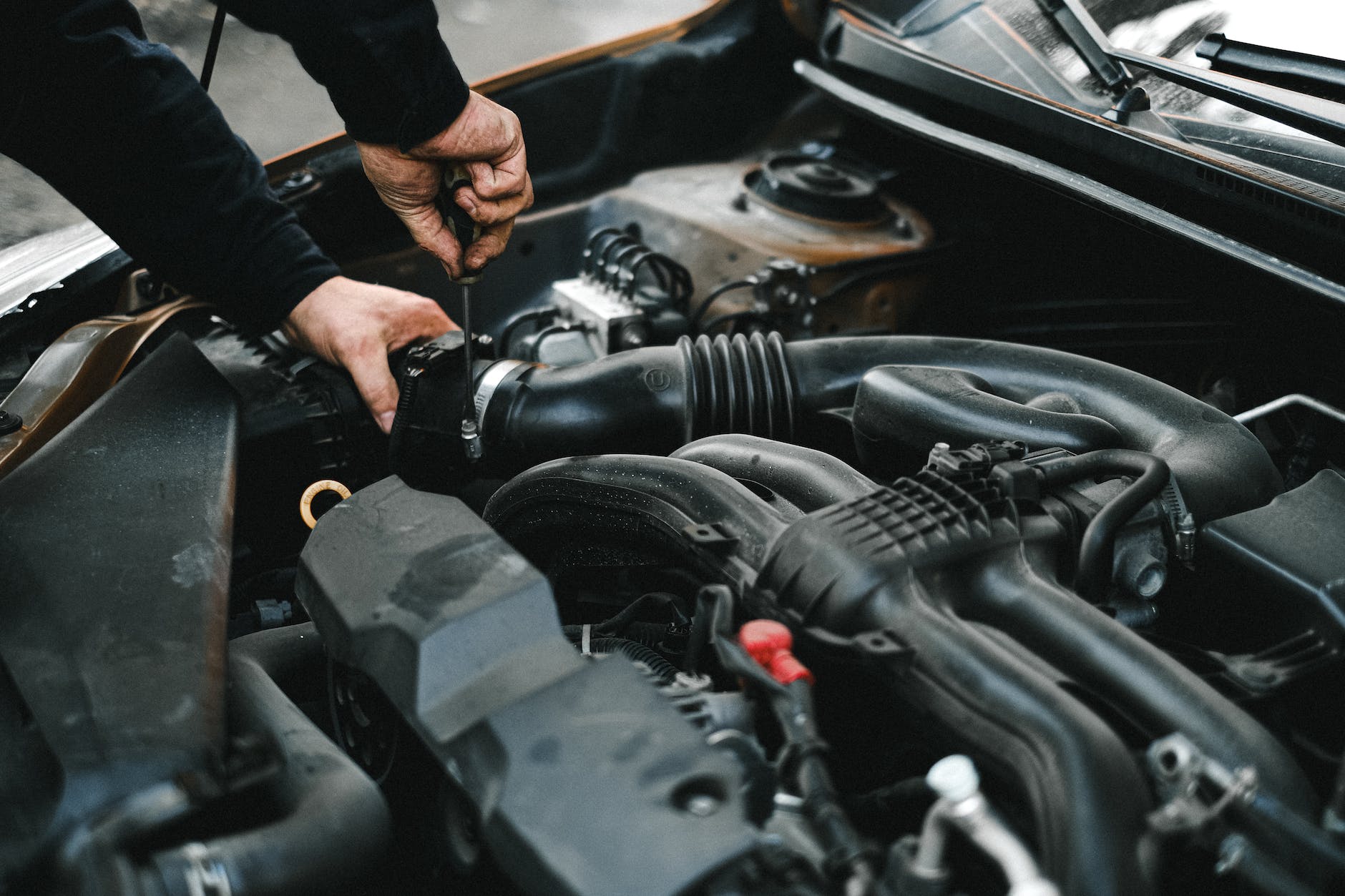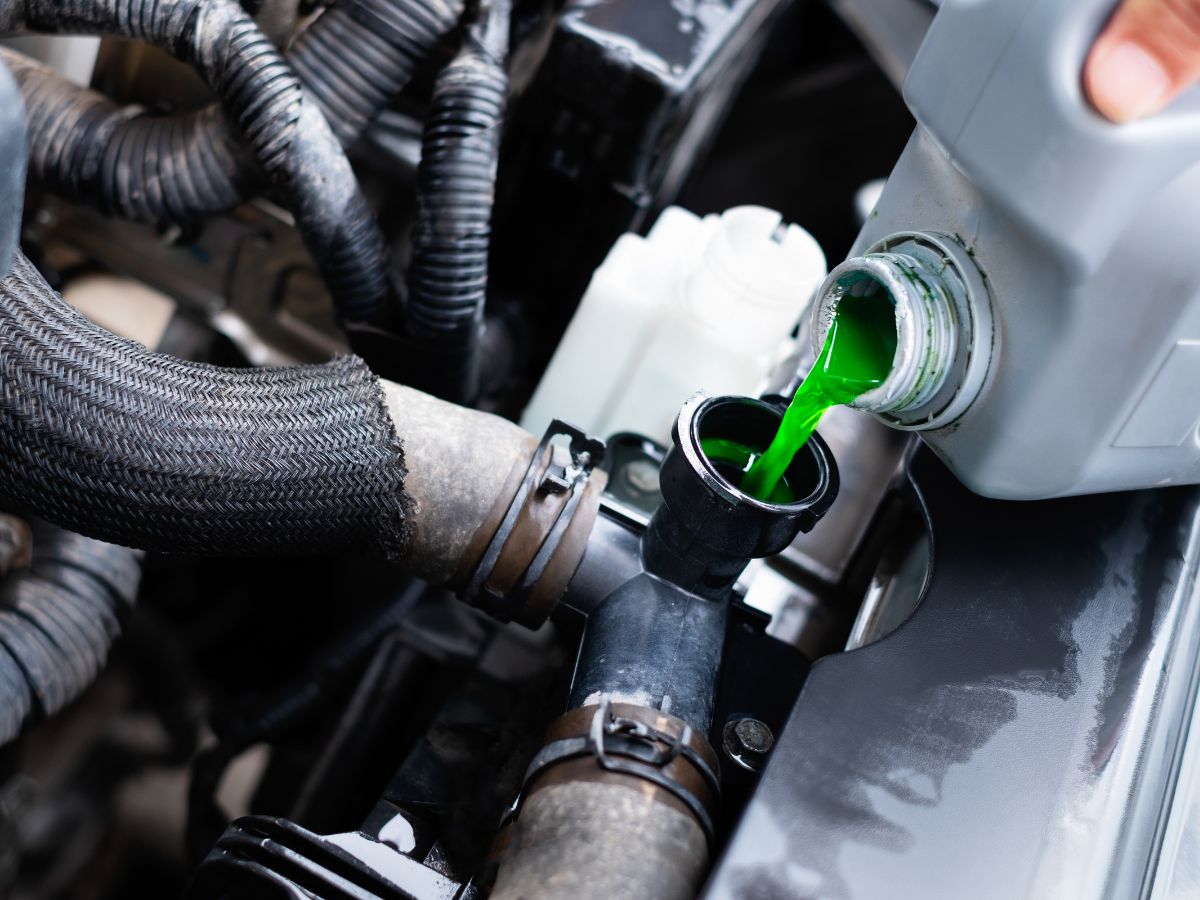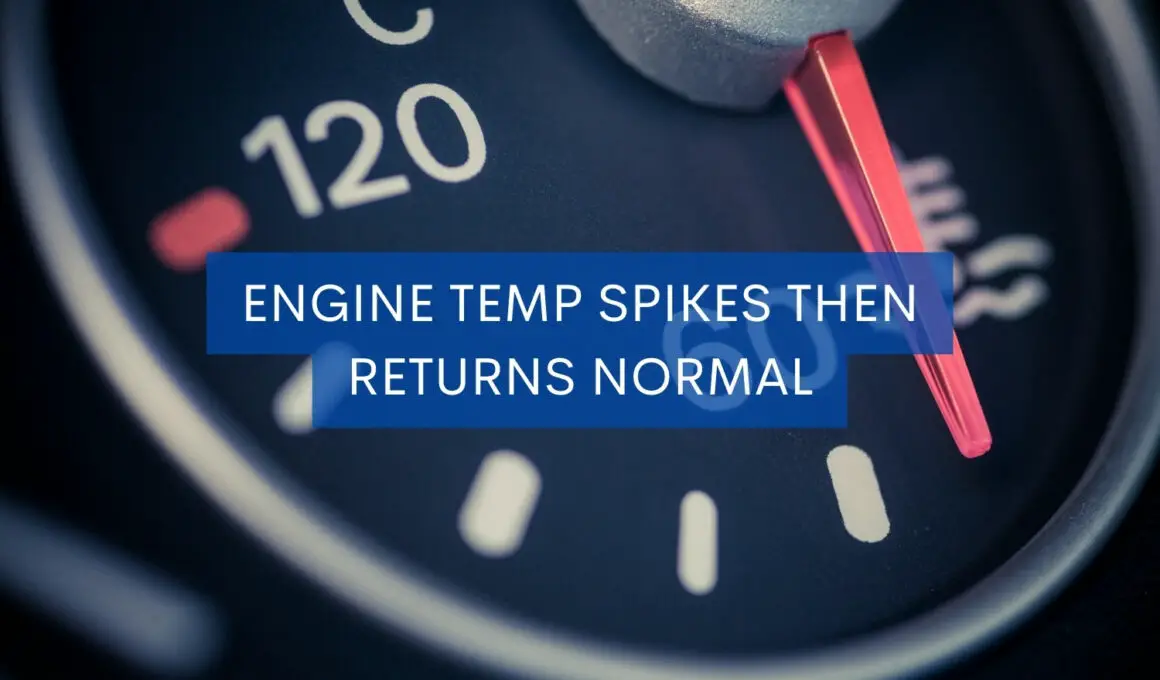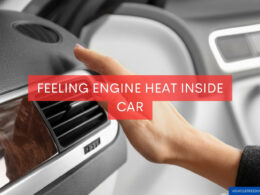In This Article Show
One of the most common issues car owners face is when the car engine temperature spikes and then returns to normal. It’s a situation that could leave you scratching your head, wondering whether it’s a minor hiccup or a sign of a more significant issue looming in your vehicle’s future.
Understanding your car’s engine temperature is crucial. Your vehicle’s engine operates within a certain temperature range to ensure optimum performance and longevity. When the engine temperature strays outside this range, whether too hot or too cold, it can lead to inefficiencies and, in worst-case scenarios, severe engine damage.
This article will delve into the causes of these temperature fluctuations and provide practical solutions to address them.
The cooling system is designed to manage your engine’s extreme heat, maintaining an optimal operating temperature that promotes efficiency and prevents overheating.
Understanding Your Car’s Cooling System.
The cooling system is designed to manage your engine’s extreme heat, maintaining an optimal operating temperature that promotes efficiency and prevents overheating.

The Role of the Cooling System
The cooling system’s primary function is to remove excess heat from your engine.
It does this by circulating coolant (also known as antifreeze) through the engine, absorbing the heat and dissipating it through the radiator. This process ensures your engine doesn’t get too hot, preventing damage and maintaining its performance.
Components of the Cooling System
Understanding the cooling system involves familiarizing yourself with its key components:
- Radiator: This is where the heat absorbed by the coolant is dissipated into the surrounding air. It’s typically located at the front of your car to take advantage of the incoming airflow.
- Thermostat: This device regulates the coolant flow based on the engine’s temperature. When the engine is cold, the thermostat remains closed, allowing the engine to warm up quickly. Once the engine reaches its optimal operating temperature, the thermostat opens to allow coolant to flow.
- Water Pump: This component circulates the coolant through the engine and the radiator. It’s driven by a belt connected to your engine.
- Coolant: This liquid absorbs the heat from the engine and carries it away to the radiator, where it’s cooled before being recirculated back through the engine.

How the Cooling System Works
When your engine is running, it generates a lot of heat. The water pump pushes the coolant into the engine block, where it absorbs this heat. The now hot coolant is then circulated to the radiator.
The heat is dissipated into the air as the coolant passes through the narrow tubes in the radiator. The cooled coolant then returns to the engine, and the cycle repeats.
In essence, your cooling system is continuously working to keep your engine’s temperature in check, which is why any deviations, like a sudden spike in temperature, should be taken seriously.
What Does It Mean When Engine Temperature Spikes Then Returns to Normal?
If suddenly, your car’s temperature gauge leaps into the red, only to return to normal a few moments later. This can be disconcerting for any driver, but what does it actually mean?
Understanding the Issue
When your engine temperature spikes and then returns to normal, it means that for some reason, your engine’s cooling system isn’t able to maintain a steady temperature. This could be due to a variety of factors, which we will delve into in the next section.
Implications for Your Vehicle
It’s important to note that occasional fluctuations in engine temperature aren’t necessarily a cause for panic. However, if your engine’s temperature is regularly spiking, it’s a signal that something isn’t right with your cooling system.
While it might be tempting to shrug off these temperature spikes, especially if they’re followed by a return to normal levels, doing so could potentially lead to more significant problems.
Remember, your engine’s cooling system is designed to maintain a steady operating temperature. Consistent deviations from this norm could cause components to wear prematurely or even cause severe engine damage.
Common Causes of Engine Temperature Spikes
It’s important to remember that these fluctuations often indicate that something isn’t functioning as it should within your vehicle’s cooling system. Let’s go through some of the most common causes:
1. Insufficient Coolant
Coolant, or antifreeze, is the lifeblood of your car’s cooling system. It absorbs heat from the engine and carries it to the radiator, where it is dissipated. If your car doesn’t have enough coolant, it won’t be able to effectively regulate the engine’s temperature, leading to potential spikes.
2. Malfunctioning Thermostat
The thermostat is the gatekeeper of your cooling system. It opens and closes to regulate the coolant flow based on the engine’s temperature. A malfunctioning thermostat that sticks closed will prevent coolant from flowing to the engine when it’s needed, causing the engine to overheat.
Conversely, a thermostat that sticks open will cause the engine to run cooler than optimal, leading to problems.
3. Radiator Issues
The radiator is where the coolant releases the heat it has absorbed from the engine. If the radiator is clogged or leaking, it won’t be able to effectively cool the coolant, which can lead to temperature spikes.

4. Water Pump Failure
The water pump is responsible for circulating coolant through the engine and radiator. If the water pump isn’t working properly, the coolant won’t be able to flow as it should, leading to potential overheating.
5. Blocked Hoses
The hoses in your cooling system carry coolant between the engine and the radiator. If these hoses become blocked or kinked, they can restrict the flow of coolant, leading to a potential increase in engine temperature.
How to Diagnose Fluctuating Engine Temperatures
Diagnosing the exact cause of your engine’s fluctuating temperatures can feel like detective work. In my years as a mechanic, I’ve developed a process to make this task easier. Here’s a step-by-step guide on how to figure out what’s causing your engine temperature to spike:
1. Visual Inspection
Start with a simple visual inspection of your cooling system. Look for obvious signs of leaks, such as puddles of coolant under your car or wet spots around the hoses, radiator, and water pump. Also, check for damage or blockages in the hoses and the radiator.
2. Checking Coolant Levels
Next, check your coolant levels. Make sure your engine is cool before you do this. If the coolant level in the reservoir is low, it could indicate a leak or that your engine is consuming more coolant than it should.
3. Thermostat Testing
Testing the thermostat can be a bit more challenging, but it’s still something you can do at home. One method is to remove the thermostat from the engine and place it in a pot of boiling water. If the thermostat opens up, it’s working correctly. If it remains closed, it’s likely stuck and needs to be replaced.
4. Radiator Pressure Test
You might need to take your car to a mechanic for this test. A radiator pressure test involves pumping air into the cooling system to check for leaks. If the system can’t hold pressure, it’s a sign that there’s a leak somewhere.
Fixes for Engine Temperature Spikes
Once you’ve identified the cause of your engine’s temperature spikes, it’s time to address the issue. Here are some common fixes based on the causes we discussed earlier:
1. Replacing or Refilling Coolant
If your coolant levels are low, you’ll need to refill your coolant reservoir. Make sure to use the correct type of coolant for your vehicle (refer to your owner’s manual if you’re unsure). If your coolant is dirty or contaminated, it may need to be fully drained and replaced.
2. Replacing the Thermostat
If your thermostat is stuck open or closed, it will need to be replaced. This is a relatively straightforward process, but if you’re not comfortable doing it yourself, a professional mechanic can perform the replacement.
3. Cleaning or Replacing the Radiator
If your radiator is clogged, it can often be cleaned to remove the blockage. This usually involves flushing the cooling system with a cleaning solution. However, if your radiator is leaking or damaged, it will likely need to be replaced.
4. Replacing the Water Pump
If your water pump isn’t circulating coolant properly, you’ll need to replace it. This is a more complex task that generally requires the expertise of a professional mechanic.
5. Unblocking or Replacing Hoses
If the hoses in your cooling system are blocked, try to remove the blockage if possible. If a hose is kinked or damaged, it will need to be replaced.
Wrapping it up
Seeing your engine’s temperature spike and then return to normal can be a confusing experience. However, understanding that this is often a sign of a malfunction within your vehicle’s cooling system can guide you in diagnosing and fixing the issue.
Various factors can lead to this problem, from insufficient coolant to a faulty thermostat or radiator issues.
By taking timely action, whether that means refilling your coolant, replacing a faulty component, or seeking professional help, you can prevent more serious damage to your engine and keep your vehicle running smoothly.













